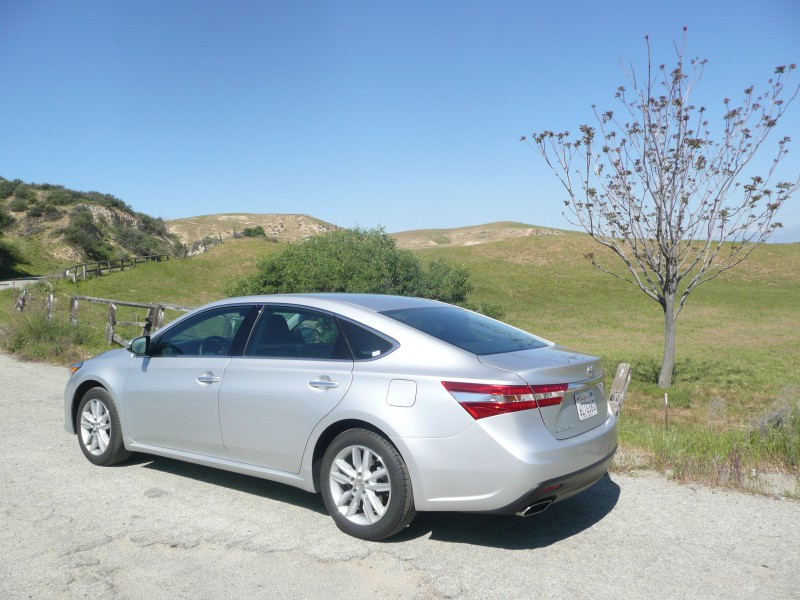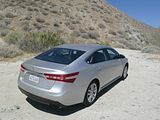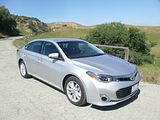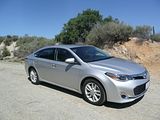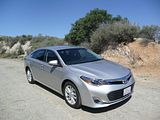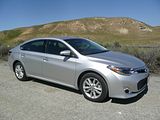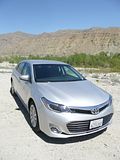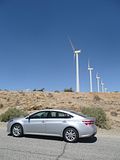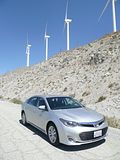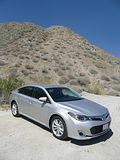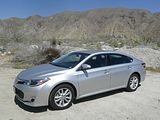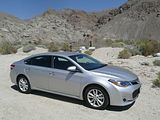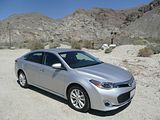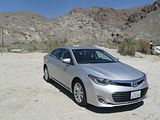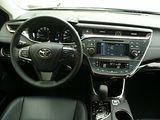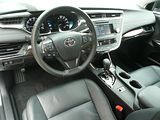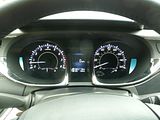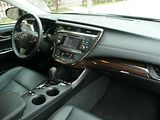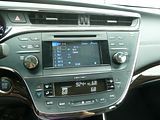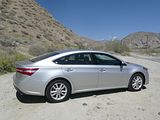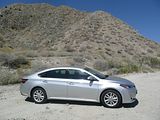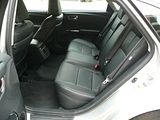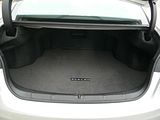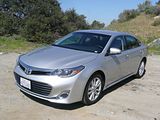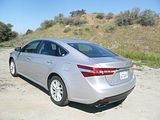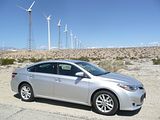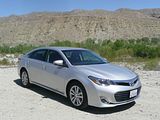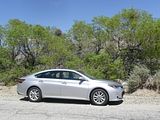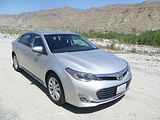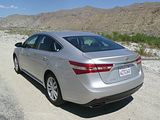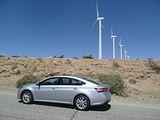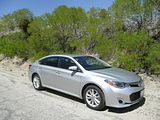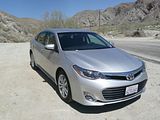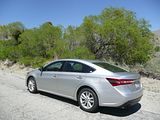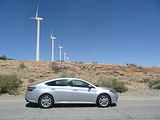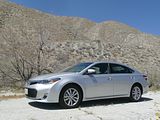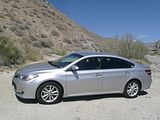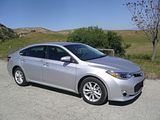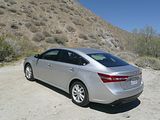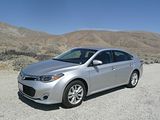
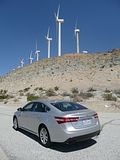
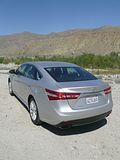
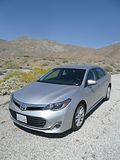
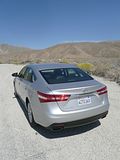
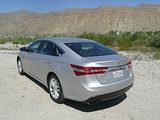
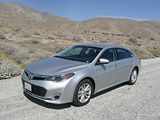
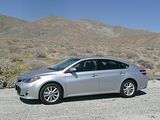
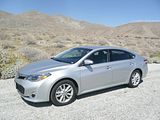
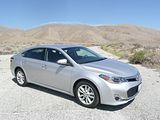
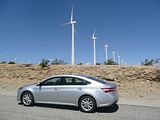
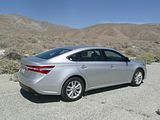
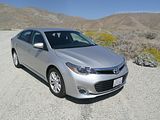
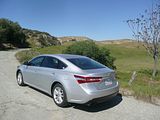
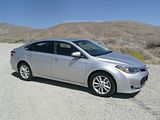
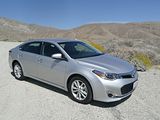
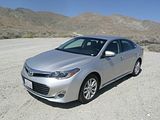
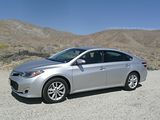
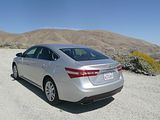
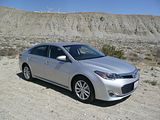
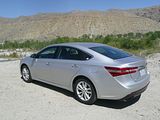
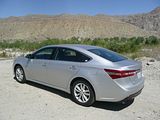
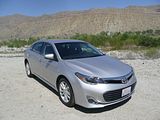
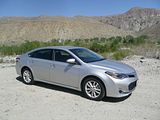
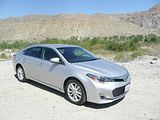
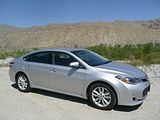
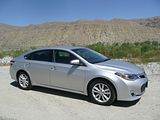
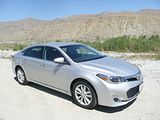
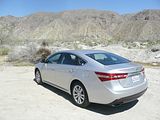

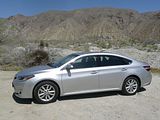
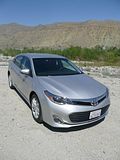
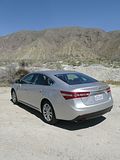
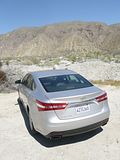
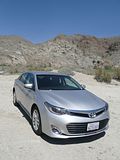
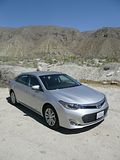
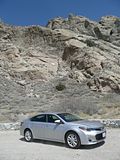
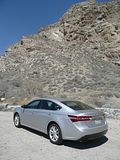
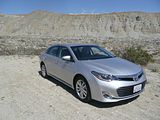
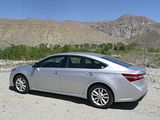
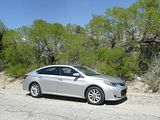
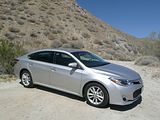
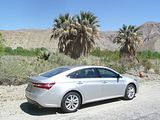
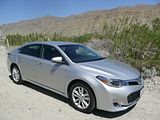
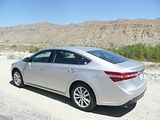
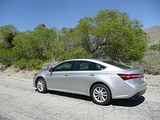
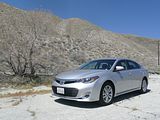

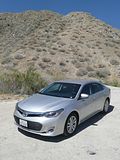
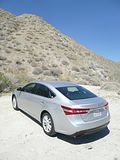
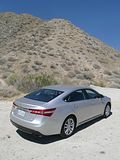
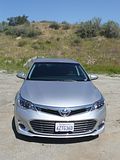
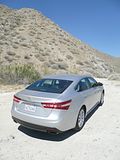
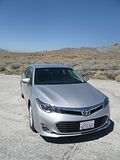


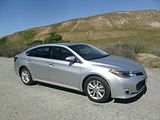
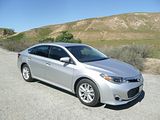
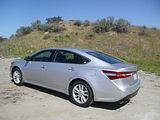
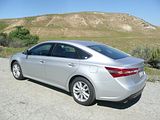

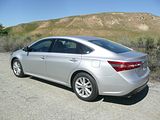
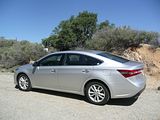
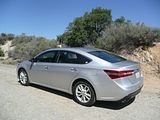
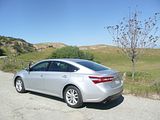

Let’s start with the styling. For sure, this XX40 model does look very different from its predecessors, largely thanks to the steeply sloping rear window and relatively short tail. It is slightly shorter and narrower, as well as an average of 120 pounds lighter than the XX30 model. Look a little harder, though, and you can spot virtually all the current Toyota design cues that have been seen in their other recent models. The much narrower projector like headlights feature on the latest RAV4 and the Auris, for instance, and the grille could be only be current Toyota, too. Even the rear lights show the same sort of thinking that has given us the Camry and RAV4. Does the design work? To my eyes, it is better than other recent Toyotas, but it is not exactly “beautiful” and I don’t think anyone would give it prizes in styling competitions. I recall talking to stand staff at the 2012 Los Angeles Show, when getting my first in-the-metal eyeball of the Avalon, and they said that there had been a lot of discussion about how not alienate the traditional Avalon buyer who remains important, and yet to try to extend the appeal, and that the feedback that they had both from existing owners and those who were still prospects was largely positive.
Open the door and you can see that Toyota have tried hard with the interior, too. Gone is the sea of unremarkable plastic that used to characterise every Toyota interior, replaced by a dashboard and door casings that are predominantly leather faced, with some neat and discrete stitching to hold the pieces together over some complex surfaces. There are fillets of very dark wood which do not look too bad, and there are some very dark gloss grey plastics surrounding some of the centre of the dash elements. Chrome accenting is used relatively sparingly. Fit and finish is to a high standard, but where it all goes a bit awry is the overall design. There are some complex angles, with the central part of the dash jutting out more in the style you would expect in a minivan, and the area in front of the passenger, rather than being flush also has some convex curves on it. Keyless starting is featured, so as long as the key is in range all you do is press the button to the right of the wheel, with your foot on the footbrake. If you press it without the corresponding touch of the brake pedal, that will activate the accessory setting, One feature I had not seen before, which applies both to the audio unit and the climate control system is that rather than have explicit buttons to press, there are touch sensitive pads immediately above an array of illuminated sunken detent labels for each corresponding function or setting, and you just touch the specific area to select say a different direction of air flow or a new radio channel. The feature seemed to work well, though I have read that people have found that it is too easy to select something that you did not intend and there is no easy way of cancelling your selection. It is an interesting idea, though heaven help you if it ever goes wrong, as I suspect rectification is difficult and costly. The audio unit had a touch sensitive screen, though I was a little surprised to find that it lacked XM Satellite radio capability. The main dials are more conventional, though these are electronic, so only illuminated when the ignition is powered on. The fuel level and water temperature gauges are set in the base of the rev counter and speedometer and whilst the needle pointers are easy to read they are on a blue background of segments which blend into the true background making the gauge surprisingly hard to read accurately at a glance. The larger dials have white markings and present no such problems. There is a further problem and that is that in bright sunlight, I found that the chrome bezels to the dials could pick up bright reflections which were very unwelcome. Column stalks operate the wipers, indicators and lights. There are repeater buttons for the audio unit and telephone, as well as the on board computer displays on the steering wheel boss. A separate stubby stalk on the right of the column operates the cruise control. The overall effect is not overly complex, thankfully, even though there are quite a lot of functions and features available.
I was aware that the refresh to the Avalon had concentrated more on the visual elements of the design, and less on the mechanical ones, so my expectations were that this car would doubtless still drive very much like any other Toyota. And in summary, it does. Biggest failing is the steering, which is far too light and vague, having very little feel at all. Doubtless this is exactly what the stereotypical Avalon buyer wants, but it did its best to ruin the car for me. That is a shame, as the other ingredients are markedly better. Propulsion comes from a 3.5 litre V6 engine which puts out 268 bhp, which means that despite the bulk of the Avalon, it is surprisingly nimble, offering rapid acceleration almost from any speed to any other. It is helped by a very smooth six speed automatic transmission, which changed gears almost imperceptibly. The trip computer showed an average of 24.9 mpg, but this was not zero-ed out from when I had taken custody of the car, and the instant numbers, and indeed the rate at which the fuel needle did not drop suggested I was achieving much better than this, and sure enough when I put in just 8.17 gallons having driven 260 miles, most of them at a steady freeway cruise, that computes to 31. 8 mpg US or 38 mpg Imperial, a very impressive figure indeed. I suspect that the 24.9 mpg is more typical of what you would see if you subjected the Avalon to much in the way of urban crawling, though. On the freeway, it proved a comfortable cruiser, with almost no sound at all from the engine, and just a little road noise to compete against the sound coming from the radio. There is a moderate amount of body roll on corners, but it is quite well controlled, and the handling did not feel as mushy as I believe used to be the case in previous generations of the model. The still relatively soft suspension means that the Toyota rides quite well, and it seemed less troubled by the ridges and pot holes than more stiffly sprung test cars earlier in this trip had proved. I had no complaints about the brakes which worked well, with progressive stopping and only moderate pressure on the pedal required. A foot operated parking brake is fitted. Visibility is generally good, though judging the back of the car is difficult, as the angle of the rear screen does not help much, though using the door mirrors and remembering that the tail is quite short meant that getting out of tight car parking spaces was not that difficult.
Gone are the days of the Avalon with front bench seat and the column change so you are not going to seat six adults in this generation of the car, but even so it is a roomy vehicle. Front seat passengers will enjoy the large, comfortable leather seats, adjustable with electric motors in 8 directions, and for those colder mornings, no doubt will welcome the electric seat heaters operated by a pair of knobs on the centre console. Those who sit in the back won’t have much to complain about either, as there is plenty of space. Despite the sloping rear roof line, there is ample headroom, and leg room is particularly impressive, even with the front seat set well back, and the rather soft seats seemed comfortable from my brief test sitting on them for a few minutes. The Avalon is still quite a wide car, so three adults should fit easily across the rear seat. Rear occupants benefit from their own air vents, and there are cup holders on the upper surface of the drop down armrest. That swooping rear styling and short tail do mean that the opening for the boot is not particularly large, but in the petrol models, the capacity most certainly is. This is a commodious boot which stretches back a long way. The rear seats do not fold, but there is a ski flap through the rear armrest aperture. Inside the cabin, there is a moderate glovebox with two shelves in it, door pockets on all doors, a deep cubby under the central armrest and quite a deep further cubby in front of the gearlever with a nicely damped sliding cover.
The test car was in XLE spec, which is the bottom of the range. Above this come the XLE Premium, XLE Touring, and Limited guises. XLE models come equipped with keyless entry/engine start, leather upholstery, heated front seats, leather-wrapped steering wheel, 17″ wheels, LED tail lights, and a touchscreen radio. XLE Premium adds keyless entry on the boot, rearview camera, and power sunroof. The XLE Touring includes 18″ wheels, a drive-mode button with Sport and Eco modes, paddle shifters on the steering wheel, a memory system for the driver seat and mirrors, and a touchscreen audio system. The Limited adds blind-spot alert, rear-cross-traffic alert, xenon headlights with LED daytime running lights, rain-sensing wipers, heated and ventilated front seats, and heated rear seats, and it also sports a rather flash chrome surround to the lower air intake at the front, which does not improve the appearance, in my opinion. Starting price for an XLE is just a few dollars under $31,000, rising to very close to $40,000. As well as the V6 models, this generation of Avalon is available as a Hybrid, which brings a 2.5 litre petrol engine combined with the hybrid system.
So, what did I make of the Avalon? I think it’s fair to say that it is a mixed bag. If you want a comfortable and roomy car in which to drive several hundred miles in a day, it will meet your requirements to a T. To be honest the old model – which I never actually got to drive – would probably have done that, too. Have the revisions made it any more appealing to the younger demographic whom Toyota was targetting? I guess only time and the sales figures will answer that one. The styling is certainly less dull, and this is probably one of the better looking Toyotas of the moment, but the vague steering does little to endear it, and once the novelty of those touch pads for the audio system wears off, I am not sure that anyone will see them as better than a gimmick. Indeed the traditional Avalon buyer could be quite alienated by the feature. In summary, this is a perfectly acceptable large car that offers good value for money, and is likely to remain reliable for years. Or you could look at it another way. This car actually shares much with the Lexus ES300, and yet costs around $6 – 7,000 less. In exchange for an arguably less prestigious badge, but slightly more adventurous styling, you are getting almost all of the Lexus experience, but for a value price. On that basis, you could say that has quite a lot of appeal. To Americans. Would it sell in Europe? Well, given the conspicuous lack of success that Lexus has achieved over the past few years, you’d have to say that it wouldn’t stand a chance. Hence, why Toyota’s largest European model is an Avensis.

